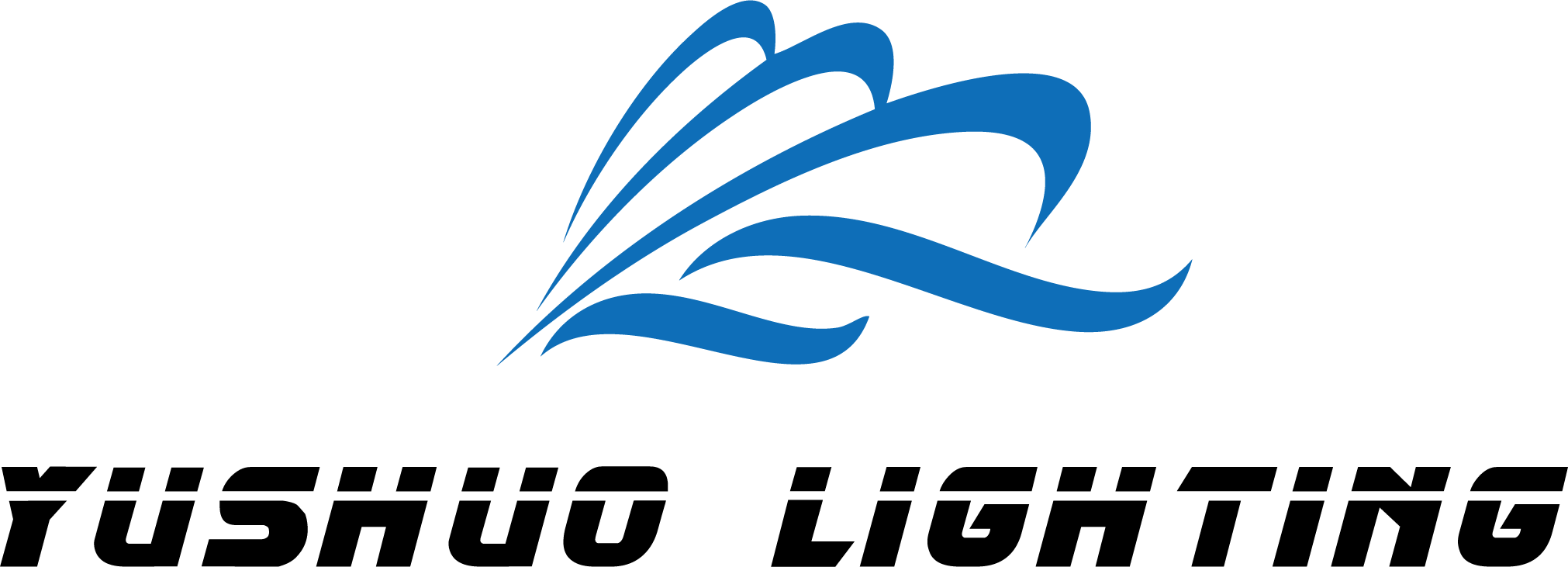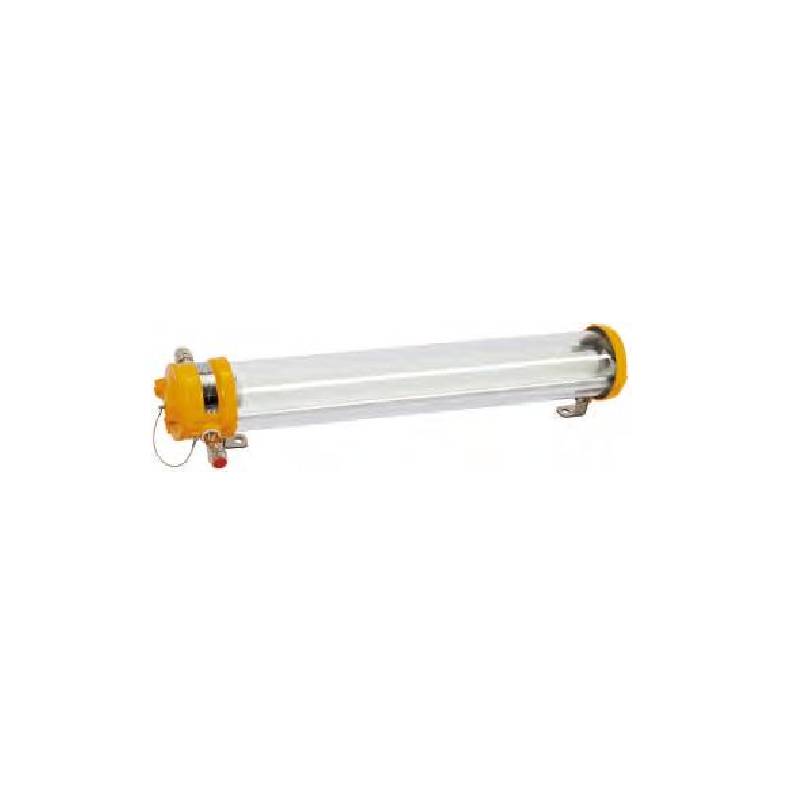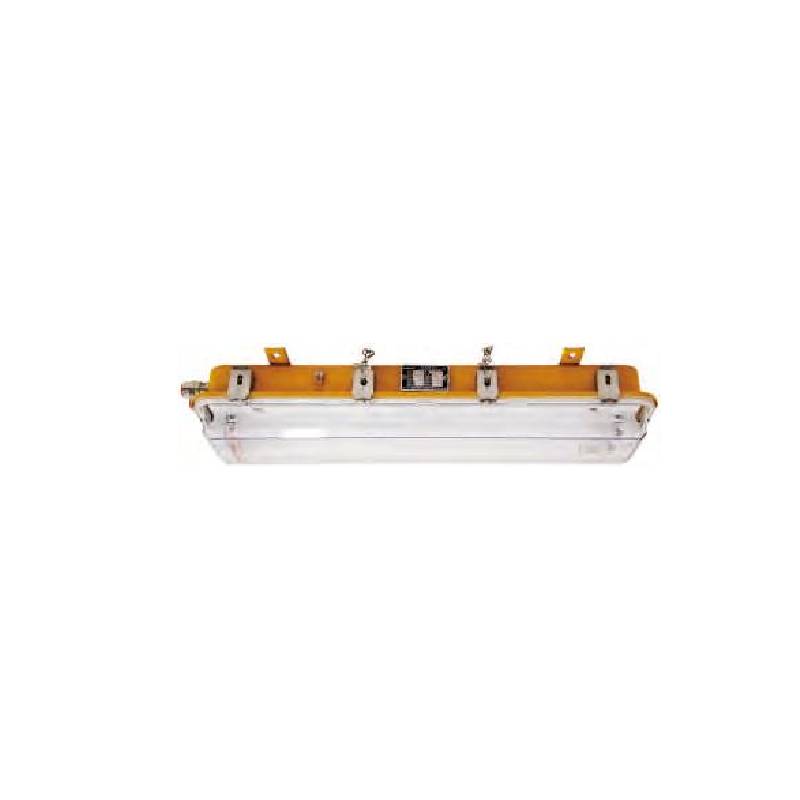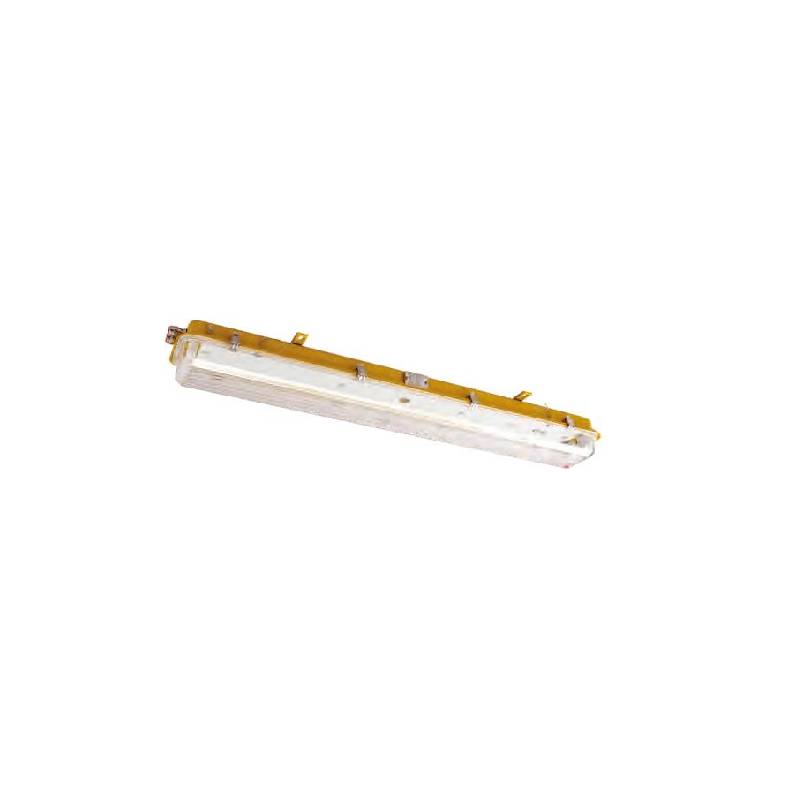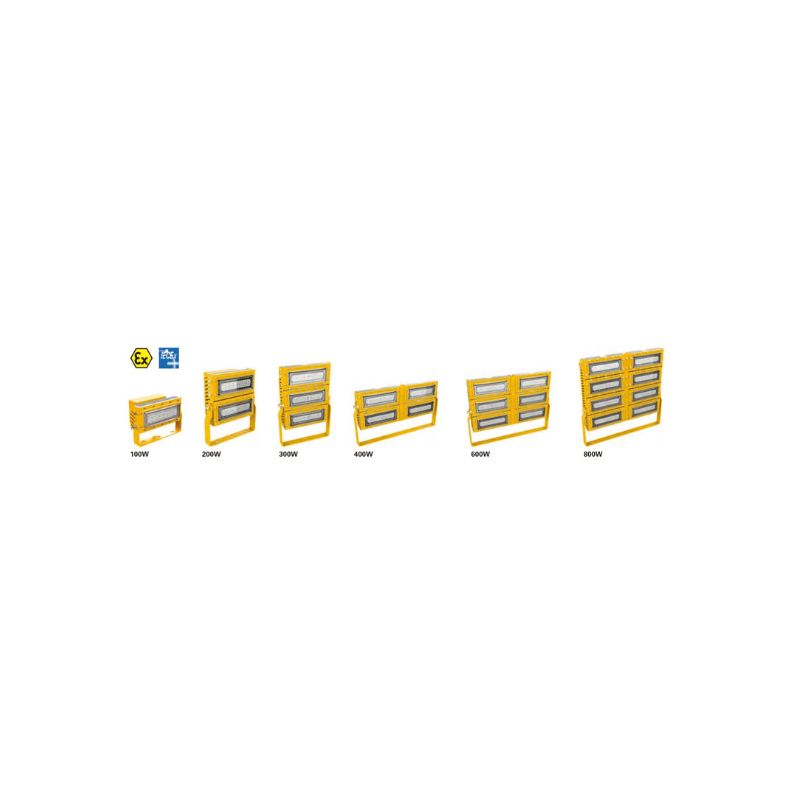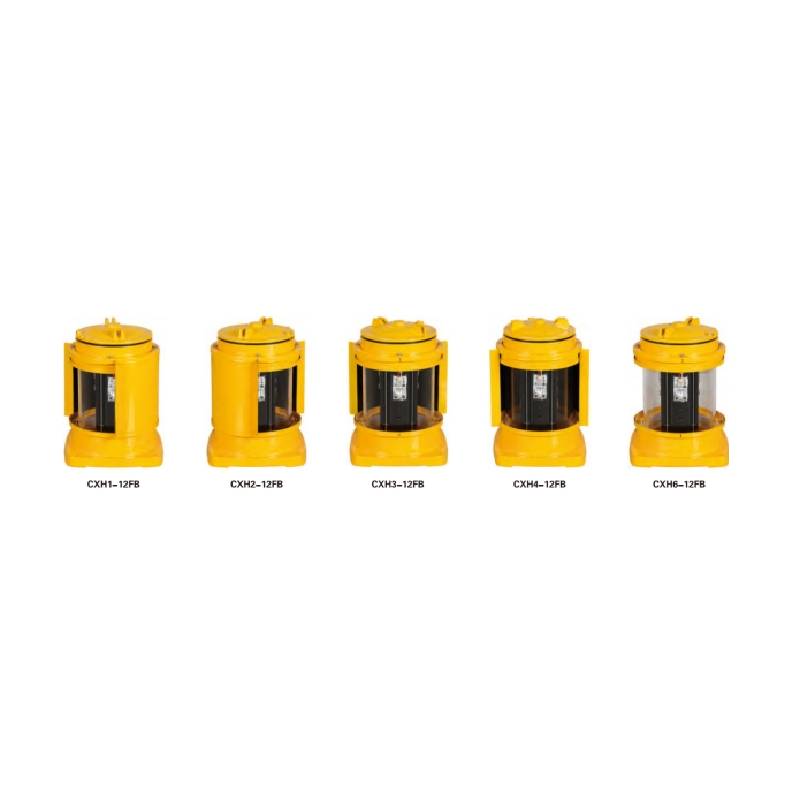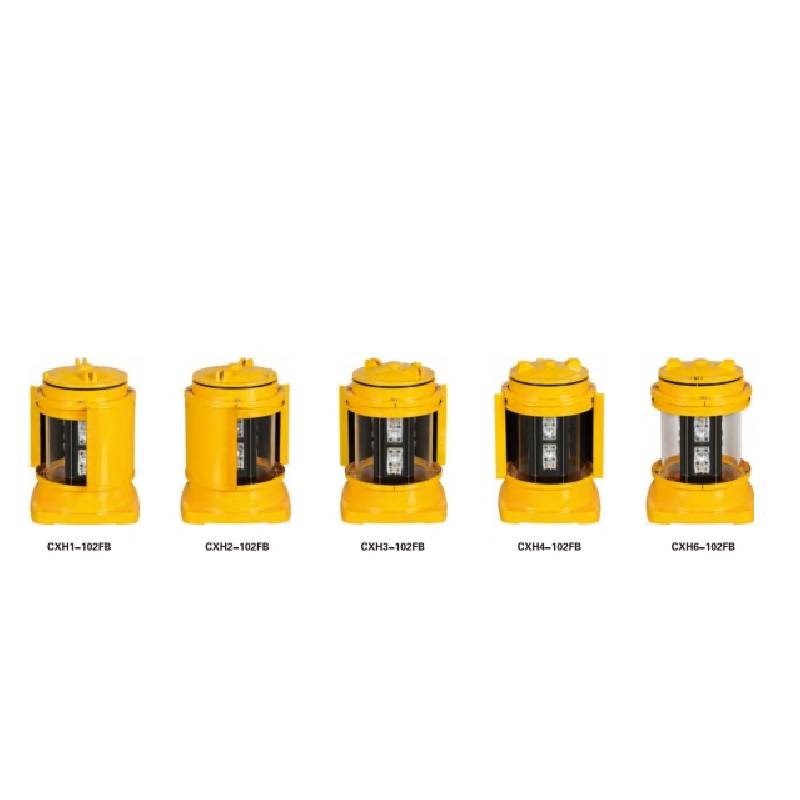ATEX and IECEx Certifications in Explosion-proof Lights
Explosion-proof lights ensure safety in hazardous environments such as oil refineries, chemical plants, mining, and offshore platforms. For these lights to be reliable and show compliance to safety standards, they need to be ATEX and IECEx certified. For explosive environments, knowing ATEX and IECEx certifications is crucial in deciding what type of explosion-proof lights to use.
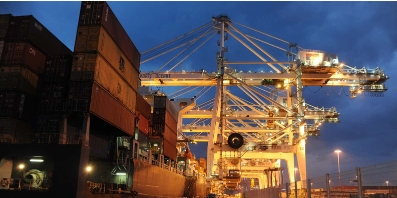
Table of Contents
Understanding ATEX Certification for Explosion-proof Lighting
ATEX is a mandatory certification for products used or sold in the European Union. ATEX stands for “Atmosphères Explosibles”, this name is derived from the EU directives regulating the equipment and protective systems. The certification framework ensures that each piece of explosion-proof lighting is designed and constructed to eliminate ignition sources and withstand extreme conditions present in hazardous areas.
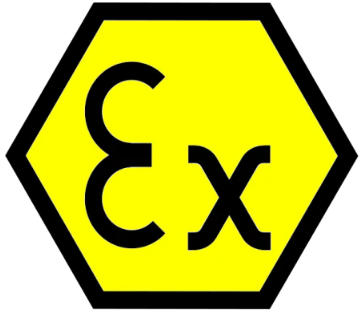
Main ATEX Directives
- ATEX 2014/34/EU: This directive is focused on the responsibilities of the manufacturer. The directive ensures that the products placed on the EU market are in compliance with all the essential health and safety requirements. This covers equipment, components, and protective systems for explosive atmospheres.
- ATEX 1999/92/EC: This directive is on the employer and operator’s obligations and describes how the certified equipment should be used and maintained in order to safeguard the workers in hazardous areas.
These guidelines incorporate measures to ensure the safety of the product and the performance of the workplace in accordance with the provisions of explosion prevention.
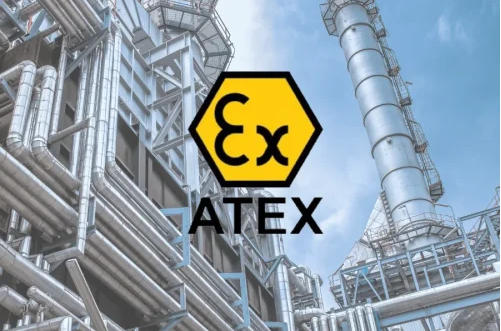
Testing and Compliance Process
Before companies can earn ATEX certifications and label their products explosion-proof, those products undergo extensive testing by a Notified Body. The tests evaluate the design’s capability of preventing the ignition of a flame with the product under fault conditions. In addition, the manufacturer prepares and keeps the technical documentation, risk assessments, and a Declaration of Conformity attesting to the changable certificates. Afterward, a CE and Ex certifies the compliance with European safety standards.

Understanding IECEx Certification for Explosion-proof Lights
IECEx is one of the products in the International Electrotechnical Commission System for Certification to Standards Relating to Equipment for Use in Explosive Atmospheres. It is based on the European Union ATEX certification and applies to all continents. Unlike the regional certifications that pertain to the European Union, IECEx systems expose an all-encompassing global standard that enhances global commerce and guarantees the essential safety standards that cut across borders.
Certification under IECEx covers a variety of equipment within hazardous environments, such as explosion-proof lights, motors, sensors, and control systems. The primary aim of IECEx is to verify that equipment for explosive atmospheres aligns with the IEC 60079 series of standards concerning protection, testing, and installation methods.
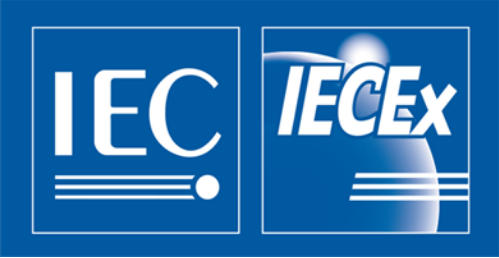
Purpose and Scope of IECEx Certification
The establishment of the IECEx certification system is aimed to foster trust regarding equipment that is intended for use in explosive environments. This system provides proof that explosion-proof lights have passed independent certification and validates the ultimate safety and performance standards. Multiple testing and certification redundancies within a jurisdiction have been recognized globally by regulatory bodies, manufacturers, and end-users.
The issuance of a cross-border recognized certification allows IECEx to load, and streamline, trade for manufacturers while providing users with an easily identifiable range of lights, and lighting equipment, for which safety and performance standards have been validated against international standards.
Certification Process and Testing Requirements
The process to obtain IECEx certification is lengthy, and involves multiple tiers of testing and evaluation by IECEx Certified Bodies. Newly manufactured explosion-proof lights, and variations of explosion-proof light systems, undergo rigorous testing to verify that they cannot ignite surrounding gases or dusts. Multiple failure modes in the design and construction of the light system are tested against enclosure integrity, temperature limits, electrical insulation, and mechanical durability.
Beyond just product testing, an audit of the manufacturer’s quality management system is performed in order to meet management system requirements for ongoing compliance. Following successful audits, certification details get published on the official IECEx online database. This opens up access to users and regulators for certified equipment, manufacturers, and their safety rating. This offers users and regulators an easy and timely certification status of the equipment.
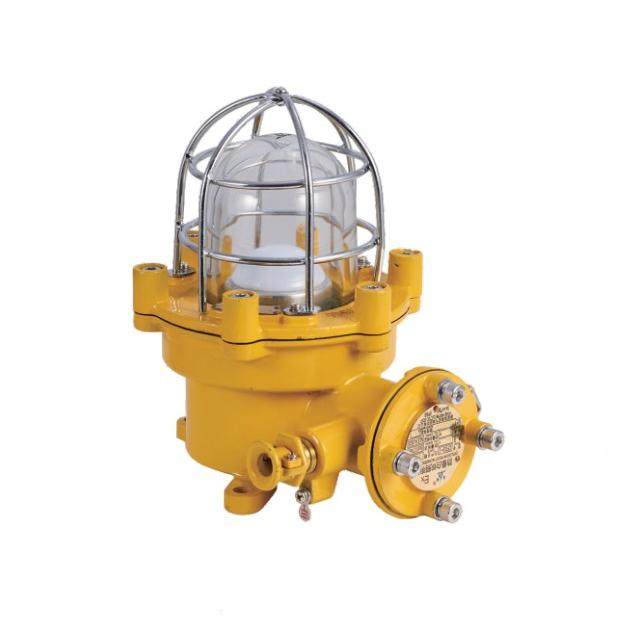
Zone Classification and Equipment Groups in ATEX and IECEx Certifications for Explosion-proof Lights
| Category | Description | Applicable to | Example / Notes |
| Zone 0 | An area where an explosive gas atmosphere is likely to occur during normal operation. | Gas/Vapor Environments | Inside fuel tanks or near open solvent containers. Explosion-proof lights must provide maximum protection. |
| Zone 1 | An area where an explosive gas atmosphere is not likely to occur under normal operation, or only for a short time. | Gas/Vapor Environments | Surrounding refinery pumps or chemical reactors. Lights must withstand intermittent exposure to flammable gases. |
| Zone 2 | An area where an explosive dust atmosphere is present continuously or for long durations. | Gas/Vapor Environments | Storage rooms or areas near gas pipelines with proper ventilation. Lights can have standard flameproof protection. |
| Zone 20 | An area where an explosive dust atmosphere is likely to occur during normal operation. | Dust Environments | Inside grain silos or powder processing chambers. Explosion-proof lights must have dust-tight construction. |
| Zone 21 | An area where an explosive dust atmosphere is not likely to occur in normal operation, or only briefly. | Dust Environments | Areas near conveyor belts, flour mills, or wood processing equipment. Lights must resist dust ingress. |
| Zone 22 | Defines the maximum surface temperature allowed on equipment to prevent ignition. | Dust Environments | Storage areas or packaging sections near dust-producing processes. Moderate dust protection is sufficient. |
| Equipment Group I | Equipment intended for underground mining operations where methane and coal dust are present. | Mining Industry | Lighting fixtures must be designed to prevent ignition of underground gas mixtures. |
| Equipment Group II | Equipment intended for surface industries, including oil and gas, petrochemical, and manufacturing sectors. | Industrial Facilities | Explosion-proof lights for refineries, offshore platforms, and chemical plants. |
| Gas Group IIA | For gases with low explosion risk (e.g., propane). | Gas/Vapor Environments | Lights designed for less volatile gases. |
| Gas Group IIB | For gases with moderate explosion risk (e.g., ethylene). | Gas/Vapor Environments | Lights must meet stricter enclosure and temperature control requirements. |
| Gas Group IIC | For gases with high explosion risk (e.g., hydrogen, acetylene). | Gas/Vapor Environments | Lights need maximum explosion protection, including enhanced flameproof designs. |
| Temperature Class (T1–T6) | Defines maximum surface temperature allowed on equipment to prevent ignition. | All Environments | T1 (≤450°C) to T6 (≤85°C); explosion-proof lights are selected based on ambient temperature and gas type. |
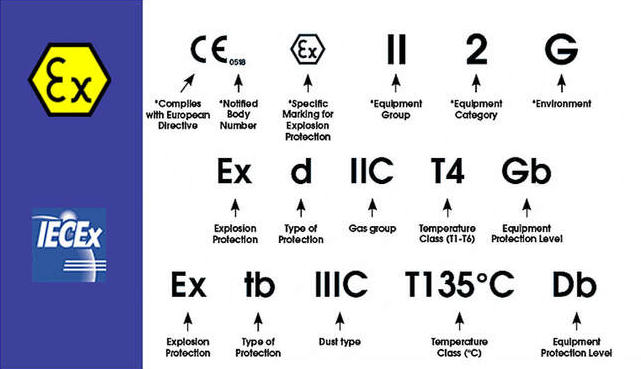
Key Differences Between ATEX and IECEx Certifications in Explosion-proof Lights
| Aspect | ATEX Certification | IECEx Certification |
| Origin | European Union (EU) | International (IEC – Global Standard) |
| Regulatory Basis | Governed by EU Directives 2014/34/EU (for manufacturers) and 1999/92/EC (for workplace safety). | Based on IEC 60079 series of international standards. |
| Geographical Scope | Mandatory within the European Union and EEA countries. | Accepted globally, including regions such as Asia, Australia, Middle East, Africa, and South America. |
| Mandatory or Voluntary | Mandatory for products sold or used in the EU. | Voluntary, but widely recognized and often required internationally. |
| Marking Requirements | Products bear the CE mark along with the Ex symbol (e.g., CE Ex d IIB T4). | Products bear only the Ex mark (e.g., Ex d IIC T5 Gb). |
| Certification Authority | Issued by EU Notified Bodies authorized under ATEX Directives. | Issued by IECEx Certified Bodies (ExCBs) recognized globally. |
| Documentation | Requires a Declaration of Conformity, technical file, and manufacturer self-assessment (for low-risk equipment). | Requires a Certificate of Conformity (CoC) listed in the IECEx online database for public verification. |
| Focus Areas | Ensures compliance with EU laws and harmonized standards for explosion safety. | Ensures international consistency and mutual acceptance between different countries. |
| Quality Assurance | Involves periodic audits of manufacturing processes to ensure continuous compliance. | Includes assessment of both product testing and manufacturer’s quality system (IECEx QAR – Quality Assessment Report). |
| Recognition Level | Primarily recognized within Europe; may require additional national approvals outside the EU. | Globally recognized and often accepted without the need for additional local testing. |
| Primary Advantage | Provides legal market access within the EU and ensures compliance with European regulations. | Provides global acceptance, reducing duplicate testing and certification costs. |
| Example Marking | CE Ex d IIB T4 Gb – showing compliance with ATEX and EU directives. | Ex d IIC T5 Gb – showing compliance with IECEx international standards. |
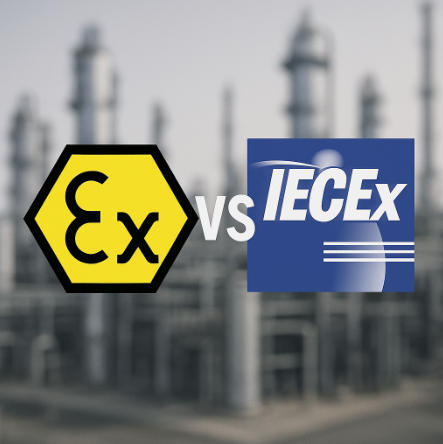
Key Benefits of ATEX and IECEx Certifications in Explosion-proof Lights
1. Ensuring Safety in Hazardous Environments
The major positive outcome of ATEX and IECEx certifications is safety. Lighting equipment that comes with these certifications guarantees the absence of any points of ignition, be it electrical sparks or high-surface temperatures, coming into contact with any flammable materials. Thus, even in the event of the equipment malfunctioning, the lighting fixture is safe from causing an explosion. With the provision of certified protection, lighting equipment is able to considerably lower the potential of explosion hazards and enhance the safety of employees operating in dangerous explosive atmospheres.
2. Compliance with International Safety Standards
The ATEX and IECEx mark indicates that the explosion-proof lighting complies with the international standards of safety in electrical equipment. ATEX certification complies with the European Union directives 2014/34/EU and 1999/92/EC, while IECEx certification complies with international IEC standards. This means that lighting products made by the manufacturer pass the rigorous standards of design, manufacturing, and testing. A manufacturer proves safety and quality when they meet these lighting standards and the customer can also meet their local and international demands.
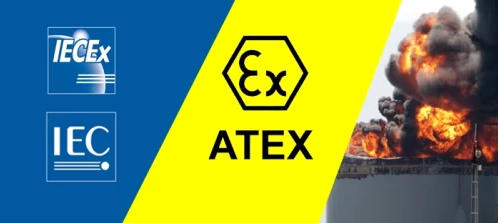
3. Facilitating Global Market Access
The best advantage with IECEx certification is that it is accepted globally. ATEX certification is the only one required for the European market, but products with IECEx certification are accepted in many parts of the world, including Asia, the Middle East, Australia, and South America. This means that manufacturers holding both ATEX and IECEx certifications can freely access the European and international marketplaces where they can avoid redundant testing and paperwork. For the end user, this means that there is easy access to the explosion-proof lighting and the safety standards expected are universally uniform, no matter the country.
4. Improving Equipment Reliability and Performance
Unit typifications that qualify as ATEX or IECEx certified explosion-proof lights have been designed to endure scrupulous industrial terrains. Explosive ATEX and IECEx certified lights provide consistent illumination that is vital in complicated industrial settings. More so, the advanced LED certified lighting technology makes the lights more brilliant and less energy demanding, progressive towards productivity as well as the sustainability of the workplace. Conclusively, the durability in certified lighting systems during extreme conditions, Rogers uplifts durability, and reliability in turns enhances long service periods of use in closed and crucial environments where operational use is of utmost importance.
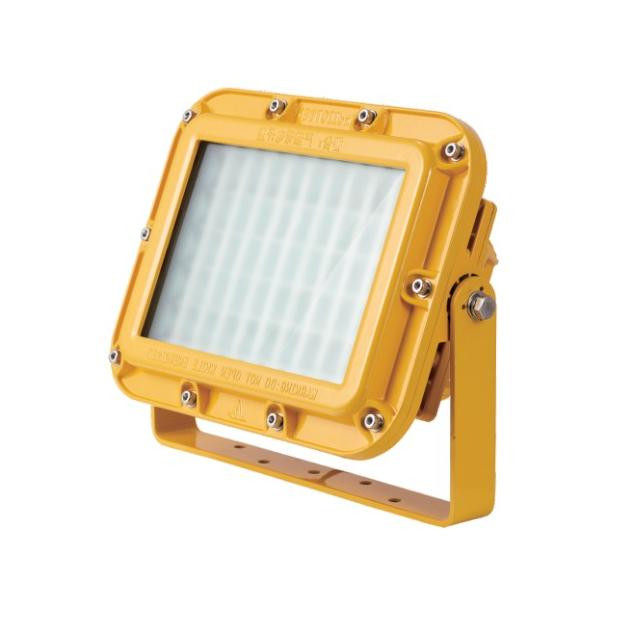
5. Enhancing Workplace Productivity
Safety and efficiency often go hand in hand. ATEX and IECEx-certified explosion-proof lights provide consistent illumination and stable performance, which are crucial for visibility in complex industrial settings. Workers can operate confidently without worrying about lighting-related hazards. Moreover, the use of advanced LED technology in certified lighting solutions enhances brightness while lowering energy consumption, improving overall workplace productivity and sustainability.
6. Simplifying Inspection and Maintenance Processes
The inspection and maintenance of explosion-proof lights is simplified by the issuance of standardized markings and documents. Every product’s label includes protection type, temperature class, gas/dust group, and zone suitability, which greatly assists inspectors and technicians as they determine compliant fixtures for specific hazardous zones. Provision of recognized certification standard lighting also helps streamline the regular maintenance process, since the lighting certif icates standards will help mitigate maintenance related risks.
7. Building Trust and Confidence in Safety Systems
The presence of ATEX or IECEx certif icates encourages trust relationships between the lighting certif icates, the end users and the safety authorities. Trust relationships are based on the predictable and quality of the certif icate lights. For the operators of production in the certif ied lighted hazardous industries, the lights attest to the presence of safety compliant measures and to the commitment to protection of personnel and company assets, thereby enhancing the company reputation.
8. Reducing Legal and Financial Risks
The use of uncertified or non-compliance explosion-proof lights poses the risk of significant operational, legal, and financial implications that can lead to operational and legal liabilities. Companies can risk production halts, fines, and liability exposure. However, holders of ATEX and IECEx compliant lights assist organizations with avoiding the previously listed risks as they help organizations maintain compliance with the law. In addition to the above, providers of liability insurance view certified equipment as a means of avoiding accidents and, therefore, justify the reduction of liability exposure and the insurance premium.
- Supporting Sustainability and Long-term Value
Modern LED explosion-proof lights are certified as holding ATEX and IECEx certifications. Thus, both the explosion-proof lights and LED technology being certified as explosion-proof lights that hold ATEX and IECEx certifications will allow the explosion-proof lights and LED technology in the explosion-proof lights to reduce power consumption and maintenance waste to help the environment. This will assist the organization achieve their goal of obtaining a certified lighting system as certified lighting will assist organizations with their safety and sustainability goals. This is critical with the increasing trends in environmental sustainability in the industrial sector.
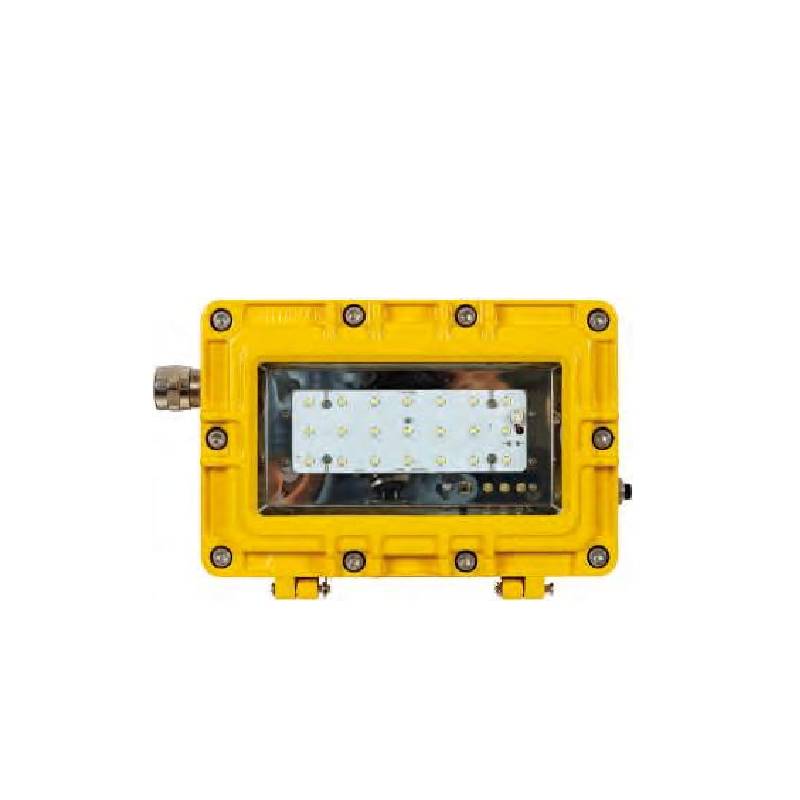
Key Factors to Consider for Choosing the Right Certified Explosion-proof Lights
1. Understanding Certification Requirements
In order to choose the most appropriate explosion-proof lights, understanding the relevant certifications within your region and industry is vital. Within the European Union, the most pertinent certifications will be ATEX and IECEx which is relevant for international markets. The ATEX certification ensures the relevant European safety directives are met, and IECEx ensures compliance with the international IEC standards. It is vital to the selection of your lighting system to ensure the appropriate certifications are displayed for your region of operations. The use of uncertified or wrongly certified lights will pose a safety risk and be a source of legal risk concerning your operational certs.
2. Assessing Hazardous Zone Classification
Explosive hazardous areas are categorized into varying zones according to the probability and the time length of the occurrence of explosive atmospheres. In gaseous situations, the zones are designated as Zone 0, Zone 1, and Zone 2, whereas in situations with dust, they are categorized as Zone 20, Zone 21, and Zone 22. As an example, Zone 0 or Zone 20 indicates the continuous presence of explosive materials, and thus it necessitates the most substantial protection, whereas Zone 2 or Zone 22 implies the material is only exposed at occasional timeframes. The selection of the lighting device certified for the correct zone classification will ensure it provides the adequate protection your environment specifically needs.

3. Considering the Type of Explosion Protection
Selecting explosion-proof lights entails the use of various designs for different applications and thus different protection methods are implemented. The most common methods include flame-proof (Ex d) protection, which contains the internal explosion; increased safety (Ex e) protection, which stops sparks and high temperatures, as well as intrinsically safe (Ex i) protection which limits energy to the system to prevent possible internal ignition. Hence, the knowledge of these methods will allow one to adequately assign the appropriate level of lighting technology according to the risk and the environmental conditions of the site.
4. Evaluating Material and Construction Quality
The quality and durability of the construction materials and the design of the enclosure are critical factors in determining the reliability of the explosion-proof fixtures. For lighting elements which are to be used in places with extreme conditions such as offshore oil platforms and chemical plants, long lasting construction materials which are resistant to corrosion, like aluminum alloys and stainless steel, are important. For safety, the sealing of the enclosure must be resistant to dust, water, and chemicals, and the lighting fixtures must also exhibit safety features such as impact resistance, vibration resistance, and appropriate IP-rated sealing. Well-constructed fixtures lessen the operational system’s unreliability and reduce the maintenance frequency, thus, increasing the maintenance reliability.
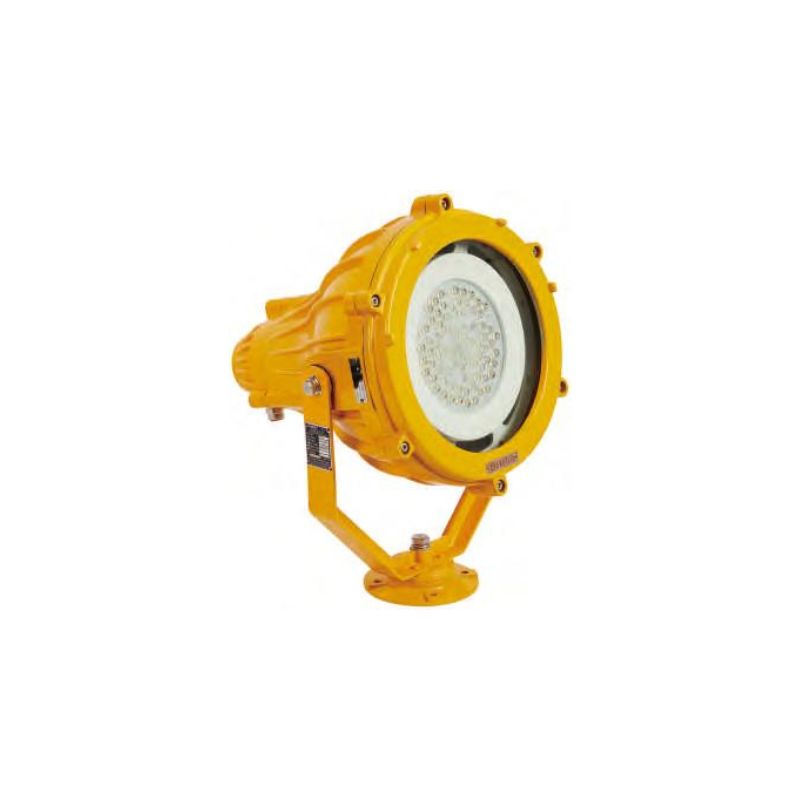
5. Checking Temperature Class and Gas Group Compatibility
Gas group and temperature classification are important safety parameters in the use of blast escort. temperature classes T1 to T6 are used to rank the temperature classes of the illuminators. The maximum temperature which the illuminator will attain must be lower than the ignition temperature of the surrounding dust and gases. The gas group I includes the most explosive, and gas group IIC are the most dangerous (containing hydrogen). Gas group IIA (containing propane) is less dangerous than IIC. If the protection needed is higher than the gas group I, the group must be changed to IIC. The certification markings of the lighting elements and the site temperature and gas group must be compatible to avoid ignition.
6. Analyzing Lighting Performance and Efficiency
The operational effectiveness of explosion-proof lights is influenced by safety considerations as well. Today’s explosion-proof LED lights not only outlast and out-perform the older lighting technologies, they do so at a fraction of the cost and with markedly less energy use. Critical to safety and operational performance is the selection of the appropriate product features, including lumen output, beam angle, and color temperature to minimize workspace glare and shadowing. Environmentally, energy efficiency translates to lower operational cost and reduced ecological footprint.
7. Ensuring Proper Installation and Maintenance Support
Nothing undermines the safety features of explosion-proof lights like inappropriate installation and maintenance. In this regard, the provision with documented installation strategies for explosion-proof lights is a must. Technical support, maintenance training, and the supply of consumables and spare parts demonstrate responsible manufacturer support. Long-term safety is achieved through compliance with ATEX and IECEx guidelines during routine maintenance of explosion-proof lighting.
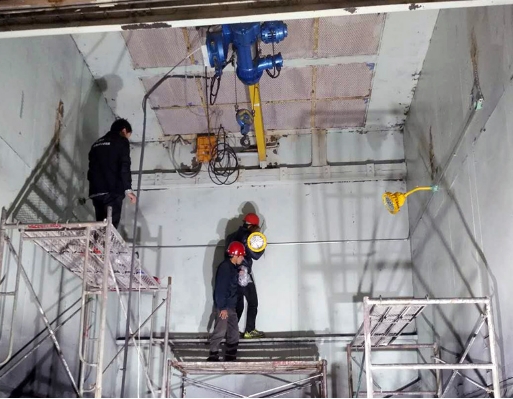
8. Balancing Cost and Compliance
Considering budgets is always important, but cost should never take precedence over safety. Initially, uncertified lights may appear cost-effective, but they can lead to safety and legal issues. Long-lasting and certified explosion-proof lights greatly minimize the risk of accidents and potential downtime. For industries that rely on hazardous materials, compliance over cost will have the best outcome in operational efficiency and lead to lower total ownership costs.
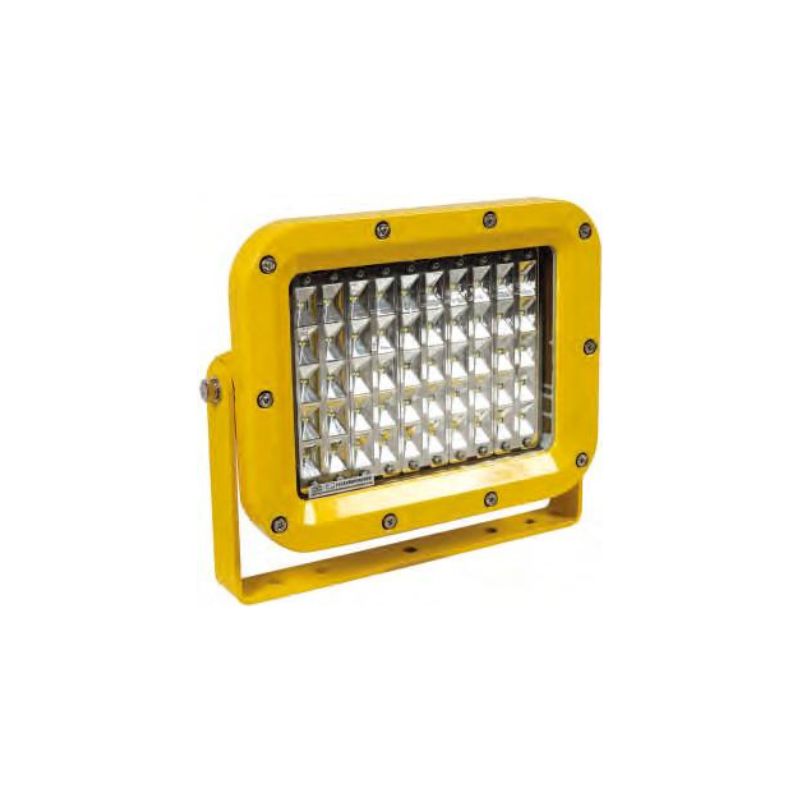
Summary
The ATEX and IECEx certifications are beneficial in the explosion-proof lighting industry and prove that the equipment is designed, tested, and verified to use in an environment where there are potential explosive materials. ATEX safeguards compliance within the European sphere, and IECEx ensures global interoperability and safety. Investing in certified explosion-proof lights of value will protect your employees and equipment. This will improve operational safety, and legal compliance, and boost overall efficiency.
